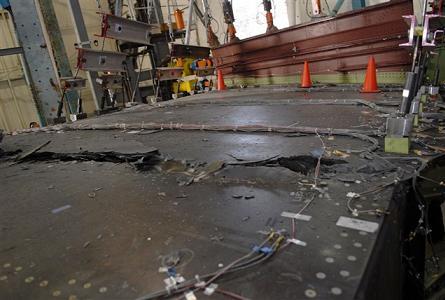Boeing has completed destructive testing on the 787's all-composite wing box, a process which is part of the aircraft's certification programme.
Manufactured by Boeing's Japanese partners, the wing box is the crucial support structure for the twin-jet's wings, engines and landing-gear.
The airframer says today that it has finished destructive tests on a full-scale wing box, and plans to release video images of the procedure on 18 November.
|
|---|
© Boeing |
"Successful completion of the wing box destruction test marks a major step forward in highlighting the innovation on the 787," says 787 development vice-president Mark Jenks.
"In addition to determining the strength of the structure, the test helps us verify the analytical methods we have used to calculate the loads the structure will have to carry."
Boeing has given little additional information, but a spokeswoman for the company says that the structure passed the test.
Certification requirements mean the wing must withstand loads 1.5 times that of the maximum aerodynamic loading the aircraft could expect in service.
The wing box used in the tests weighs around 24,950kg (55,000lb), inclusive of test instrumentation, and measures some 15.2m (50ft) in length and up to 5.5m (18ft) in width.
Upper and lower surface panels of the wing are manufactured from the composite materials used for the fuselage, while the 787's wing ribs are monolithic aluminium.
Japanese firm Mitsubishi Heavy Industries builds the wing box sections while Fuji Heavy Industries manufactures the centre wing box for the aircraft.
The centre wing box was at the centre of a design issue earlier this year when Boeing discovered that its composite spars buckled prematurely after they had been slimmed down to reduce the jet's weight.
Boeing admitted in March that it was having to modify the centre wing box of the first six 787 aircraft, and incorporate a new design into subsequent airframes.
Source: Air Transport Intelligence news
























